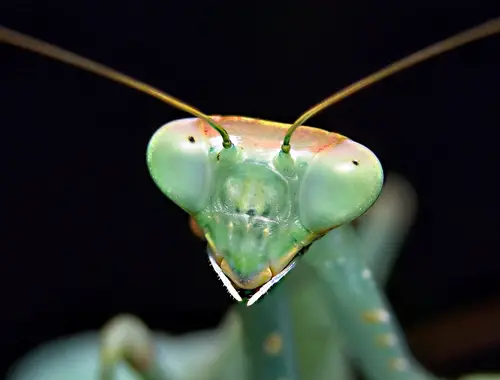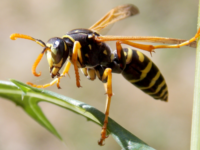
Introduction
The praying mantis is an insect in the order Mantodea. These insects are quite unique and easy to recognize by their big eyes and forelimbs that are held as if they are praying. Their heads have a triangle shape. They have two pairs of wings that lie flat over the abdomen. The closest insect relatives to the mantises are the cockroaches and termites. Read on to learn more about these fascinating insects.
Where do praying mantis live?
Praying mantis occur in many parts of the world although they are most common in tropical and subtropical regions; they can also be found in warm temperate zones. There are many myths about praying mantises.
Where do praying mantis go in the winter?
Most species of praying mantis do not live very long. In fact, the lifespan of these insects is only a couple of weeks or months, depending on the type of mantis. The adults usually die in the winter time but before then they will have laid eggs.
Where do praying mantis lay eggs?
The female praying mantis secretes a large structure called an ootheca. This contains the eggs. The ootheca can be found attached to any object including plants and even the sides of buildings.
How praying mantis lay eggs?
The mantid deposits eggs inside the ootheca that she produces. There can be as many as 400 eggs inside a single ootheca. Often the ootheca is deposited in autumn and young hatch out in the following spring when environmental conditions have improved.
What praying mantis eat
These insects are predaceous, meaning that they actively catch and feed on other animals. They even sometimes eat their mates. A recently mated female does on occasion eat the male after mating. This happens in about 1/3 of all praying mantis mating events.
Do praying mantis eat ants?
Praying mantis do eat ants when they encounter them. One species of praying mantis even mimics an ant in order to more easily feed on ants and other small insects. This species is Myrmecomantis atra.
Do praying mantis eat spiders?
Spiders are often eaten by praying mantis. The only limitation is size; a praying mantis that is very small won’t catch a very large spider.
Do praying mantis eat plants?
While a praying mantis is often found sitting on a plant, it does not eat plant matter. It rather uses the opportunity to blend in with the plant and lie in wait to catch insects that happen to pass near to the mantis.
Since plants attract a range of insects it is easy to see how it is a smart move for a mantis to hang out on vegetation. There are species of praying mantis that resemble flowers to blend in with the vegetation. This makes ambushing prey easier.
Can praying mantis eat fruit?
As we already mentioned, praying mantis do not eat plants, and this includes fruits. If you find a mantis sitting on fruit it is likely waiting to catch some insect or spider that may be attracted to the fruit.
Do praying mantis eat hummingbirds?
Hummingbirds may not be the typical meal for a praying mantis, but it has happened that they have fallen prey to mantises before since they are very small birds. A mantis that sits on or near a hummingbird feeder can catch a hummingbird. This is only likely if the mantis is a large adult individual. The immature stages of the mantis will be too small to catch a hummingbird.
Do praying mantis change color?
Some praying mantises have been known to modify their body color from brown to green and vice versa. However, the color change only happens after a molt. This is not the same as chameleons, which can easily change color to match the surroundings without having to shed skin.
Do praying mantis shed their skin?
The praying mantis is a hemimetabolous insect. This means that there is no pupal stage. Instead, the insect hatches from an egg case (called an ootheca) and baby mantids resemble the adults and grow in size. Over time the baby mantises molt, meaning they have to shed their skin as they get bigger. Eventually, they molt into the adult form.
Do praying mantis bite?
Praying mantis has small mouthparts so even though they could give you a little bite it should not be very painful. A mantid may bite you as a defense mechanism if you try to pick it up.
Are praying mantis poisonous?
You may be wondering “Is praying mantis poisonous?” Praying mantises are not poisonous and they are similarly not venomous either. This means that if an animal eats a praying mantis, it will not be poisoned.
The praying mantis is not venomous; in other words, their bite does not contain venom and so they cannot harm people.
Does praying mantis spit?
Praying mantises do not spit. Some insects may appear to “spit” but often this is regurgitation when they feel threatened. It is a defense mechanism. There are spittlebugs that produce a foamy secretion that very closely resembles saliva. However, these bugs are unrelated to the praying mantis.
Are praying mantis good luck?
In some cultures, the praying mantis is perceived as a sign of good fortune and luck. Some people see them as peaceful, possibly due to their appearance of “praying”. In some tribes in Africa, the mantids are seen as mythological creatures associated with rain and they may even be referred to as Hottentot gods.
Do praying mantis fly?
There is variation in flight ability among the mantids. Immature mantises often cannot fly until they have developed wings. There are also certain species that either have only short wings or no wings at all.
Can praying mantis jump?
Praying mantis can jump. This characteristic is more commonly seen among the nymphal stages before wings have developed. The jumping ability of mantids is precise. Scientists studying these insects conclude that the mantids carefully assess their surroundings and then use certain twisting body movements to accomplish a precise jump.
Praying mantis status and benefits
The conservation status and the beneficial aspects of praying mantis are discussed below.
Are praying mantis endangered?
Most species of praying mantis are not endangered. However, there is one species Mantis religiosa (European mantis) that is listed as endangered in Germany. It is important to note that the species is not IUCN listed as endangered; it is only on the German Red List.
Are praying mantis good for garden?
Mantids are generally helpful insects in the sense that they do feed on many pest insects. The mantis plays an important role in food chains even though it does also feed on honeybees and other important pollinators.
Are praying mantis invasive?
There are some species of praying mantis that can be considered invasive if they are not indigenous to an area. It is important that you do not release an exotic praying mantis into the garden. This is because non-indigenous animals can wreak havoc and severely disrupt ecosystems.
Are praying mantis smart?
There is evidence that praying mantids are able to learn and return to places where they have successfully caught prey. There was even an instance of a mantid, Hierodula tenuidentata, catching fish at night while perching on nearby water plants.
Where to buy praying mantis?
Praying mantis can be purchased from biological supply companies. How easy this is to do likely varies depending on what country you live in. Note that it is probably illegal to import living insects into a country since there is a risk of such animals becoming invasive.
Summary
Praying mantises are not dangerous to humans since they are not venomous and cannot bite. They are, however, voracious predators of small insects, arthropods, and even small vertebrates. They can be helpful in the garden and most species are not endangered.












Leave a Reply